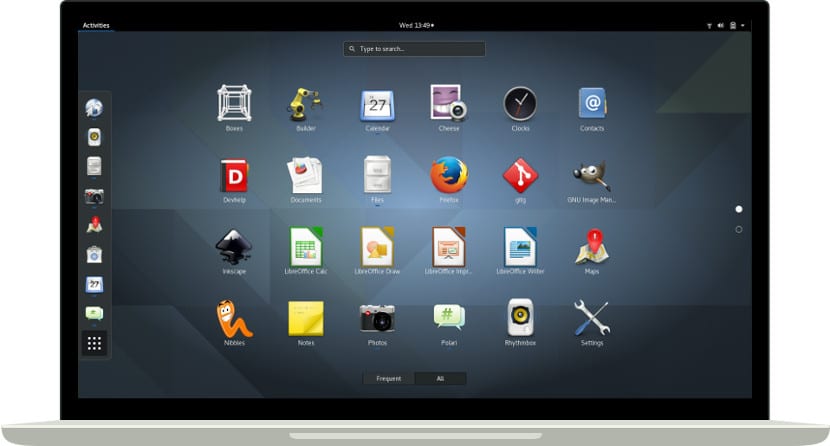
Despite the fact that it is currently very easy to put a dock on our desktop or install an application. There are still many users who use shortcuts as a common thing to run their applications. There is also the possibility of having downloaded a compressed package with a new version and we want to have direct access to that version.
Although all this sounds very confusing, the truth is that in Gnu / Linux it is easy to create custom shortcuts that are registered by the desktop and that it shows them where it corresponds automatically, for this only we have to create a .desktop file.
These types of files were created precisely to indicate to any Gnu / Linux desktop where the executable was, which icon to use and show on the desktop. We have a shortcut like the ones created by Windows but more useful than these because the .desktop files allow you to enter the Applications Menu, being more general than the Windows shortcuts.
To create a .desktop file we have to create a blank document (easy with Gedit, Nano, Kate or any basic text editor) and write the following fields:
[ Desktop Entry ] Encoding = UTF- 8 Version = 1.0 Type = Application Terminal = false Exec = Dirección del archivo o ejecutable Name= Nombre que recibirá la aplicación Icon= Dirección del icono que vamos a utilizar
Once we have this filled in with the information from the application of the shortcut, we have to save the file with any name we want but the extension must be ".desktop". Once we have this done, we have to move or copy the file to the following system folder: ~/.local/share/applications. This folder is in all Gnu / Linux distributions, but starting with .local, the folder will not be visible as it is a hidden folder. But with the combination "Ctrl + H" it will be corrected quickly. Now we will not only have the direct access in the applications menu but we can also use it on the desktop as a direct access. Easy and simple Do not you think?
I use the CTRL + SHIFT combination in Cinnamon and drag the executable and send it to the desktop. Much easier
Your formula is much simpler, but my question is:
What should I do when the application must run on the terminal?
Thank you, Leonardo Ramírez. I have been new to Linux for a week: I installed Ubuntu 18.04 LTS, with the Gnome 3 desktop. I have been looking for several days how to create shortcuts to text files (not only to applications) and I see that CTRL + SHIFT + select also works file and drag it to the position on the desktop where we want the shortcut to be. Very comfortable. Thanks again. And to Joaquín for his blog.
Thanks genius!
Hello, a question, and how do I eliminate them? regards
CTRL + SHIFT and dragging the folder seems to me the best solution to have a direct link to a folder, the closest thing to a Windows shortcut. Just for good measure, I am super new to Linux.
I have a special partition for all my personal files. An example: I made a folder called Excel where I actually have spreadsheets.ods and by right-clicking on it, I choose the “Send to” option and then I choose “Desktop (Create link)”
Easy
To create a shortcut you have to do so many stupid things, it doesn't make sense to waste so much time on such an absurd thing.